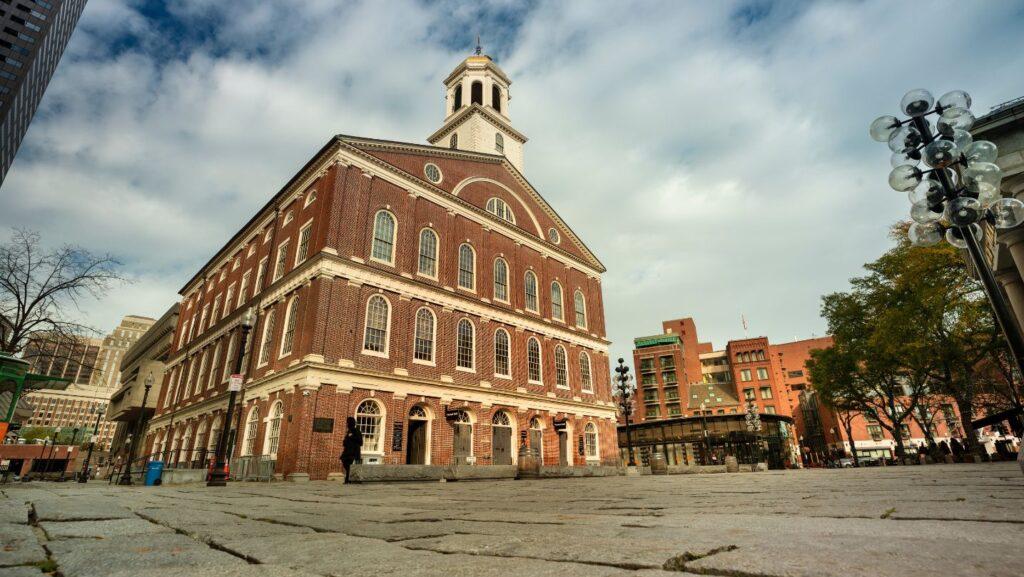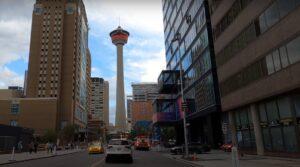The Freedom Trail is a 2.5-mile-long path that winds through the heart of Boston, connecting 16 historically significant sites that played pivotal roles in the American Revolution. It offers a unique opportunity to immerse oneself in the rich history of the United States and its struggle for independence. The Freedom Trail holds immense historical significance as it showcases the birth of the American nation.

History of the Freedom Trail
The Freedom Trail was established in 1951 to commemorate the city’s revolutionary past. The trail’s creation was a collaborative effort between local organizations and historians, aiming to preserve and promote Boston’s ancient sites for generations to come. Boston was at the forefront of the American Revolution, and the trail provides a glimpse into the lives of key figures like Paul Revere, Samuel Adams, and others who fought for freedom and shaped the nation’s destiny.
How to Reach the Freedom Trail
A. Transportation Options to Boston:
- By Air: Logan International Airport (BOS) is near the middle of Boston. Many planes from different places come and go there.
- By Train: Boston is connected to several major cities by Amtrak train services, with Boston’s South Station being a primary transportation hub. Amtrak’s Northeast Corridor service provides efficient and comfortable train travel to and from Boston, making it an excellent option for travelers from neighboring states or cities.
- By Car: Boston is easily accessible by road, with several major highways connecting it to various regions of the United States. Interstate 90 (Massachusetts Turnpike) and Interstate 93 are the main highways that lead to the city.
B. Navigating the Trail Within the City:
- Starting Point – Boston Common: The Freedom Trail officially begins at Boston Common, the city’s oldest public park. You can enter Boston Common from different places. So you can begin the trail from anywhere in the city.
- Red Brick Path: The Freedom Trail is marked by a red brick path on the sidewalks and streets, making it straightforward to follow. Red-brick markers and plaques tell visitors about the importance of each old place on the trail as they walk by.
- Self-Guided Tours: You can discover the Freedom Trail at your speed with a tour you do yourself. You can find many things on the Internet or in books, like maps and sounds, to make it more fun.
- Guided Tours: For a more in-depth and informative experience, guided tours are available. Knowledgeable guides lead groups along the trail, providing historical context, intriguing stories, and additional insights into the sites.
- Public Transportation: If the full 2.5-mile walk seems challenging, visitors can also use public transportation to reach specific sites along the Freedom Trail. The “T” (Boston’s subway system) and buses provide convenient access to various locations, allowing for a more flexible exploration of the trail.
The Best Time to Visit Freedom Trail
A. Recommended Seasons for an Enjoyable Experience:
- Spring (March to May): Spring is one of the best times to visit the Freedom Trail in Boston. The city comes alive with blooming flowers and trees, creating a picturesque backdrop for exploring historical sites. The weather is mild and pleasant, making it comfortable to walk the trail and enjoy outdoor activities. Spring sees fewer crowds compared to the peak summer season, allowing for a more peaceful and immersive experience.
- Fall (September to November): Fall is another ideal time to explore the Freedom Trail. As the summer heat subsides, the weather remains pleasant. The foliage begins to change colors, transforming the city into a captivating tapestry of red, orange, and yellow hues. This period also offers a range of cultural events and festivals, adding to the overall experience.
B. Special Events or Festivals along the Trail:
- Patriot’s Day (Third Monday of April): Patriot’s Day is a Massachusetts state holiday that commemorates the opening battles of the American Revolution. The holiday often falls in mid-April and is marked with parades, reenactments, and historical demonstrations along the Freedom Trail. It’s an excellent time to immerse oneself in the Revolutionary War era and witness living history.
- Independence Day (July 4th): Celebrating the nation’s independence on July 4th is an extraordinary experience in Boston. The city hosts a variety of events, including concerts, fireworks displays, and historical reenactments. Visiting the Freedom Trail on this iconic American holiday allows visitors to appreciate the significance of the sites in the context of the nation’s birth.
- Fall Festivals: During the fall, Boston hosts several festivals and events. They are the Head of the Charles Regatta, a world-renowned rowing competition, and various food and music festivals. Attending these events while exploring the Freedom Trail adds a vibrant and festive atmosphere to the journey.
Must-Visit Places Along the Trail
A. Iconic Landmarks and Historic Sites:
- The Old State House: The Old State House, built in 1713, is one of the oldest public buildings in the United States. It played a crucial role in the early days of the American Revolution, serving as the seat of the Massachusetts Bay Colony’s government. The balcony of the Old State House is where the first public reading of the Declaration of Independence took place in Boston.
- Site of the Boston Massacre: A significant event that fueled anti-British sentiments, occurred on March 5, 1770, near the Old State House. Five civilians were killed when British soldiers fired into a crowd. Visiting this site offers a somber reminder of the sacrifices made during the struggle for independence.
- Faneuil Hall: Faneuil Hall, often referred to as the “Cradle of Liberty,” is a historic marketplace and meeting hall. It was a hub for political gatherings and speeches that galvanized support for American independence. Today, the hall hosts a bustling marketplace with shops and eateries, making it a vibrant destination for visitors.
- The Old South Meeting House: This historic church was a focal point for revolutionary gatherings, including the assembly of 5,000 colonists to protest the British Tea Act in 1773, which eventually led to the Boston Tea Party. The Old South Meeting House is now a museum and offers insights into the revolutionary spirit of the time.
B. Unique Attractions and Hidden Gems:
- Paul Revere House: The Paul Revere House is the former residence of Paul Revere, a renowned patriot and silversmith. Revere is best known for his midnight ride to warn of the approaching British troops. The house has been restored to its 18th-century appearance, providing visitors with a glimpse into colonial life.
- Granary Burying Ground: Established in 1660, the Granary Burying Ground is the final resting place of several prominent figures from the American Revolution, including John Hancock, Samuel Adams, and Paul Revere. The tombstones and epitaphs offer a poignant perspective on the era’s prominent personalities.
- Benjamin Franklin Statue and Boston Latin School Site: Located near the Old City Hall, the Benjamin Franklin statue pays homage to the polymath and founding father. Nearby, a plaque marks the site of the first public school in the United States, the Boston Latin School, which educated several key figures of the American Revolution.
FAQs for the Boston Freedom Trail:
- How much time is needed to walk the Boston Freedom Trail?
The average duration to walk the 2.5-mile trail is 2 to 3 hours. - What is the Freedom Trail in Boston?
The Freedom Trail connects 16 sites that have historical significance for the American Revolution along a 2.5-mile path. - What is so special about the Freedom Trail?
The trail showcases iconic landmarks, such as the Massachusetts State House, Paul Revere’s House, and the Old North Church, providing visitors with a tangible connection to the past and a deeper understanding of the American Revolution’s impact. - Where do I start the Freedom Trail in Boston?
The trail begins at Boston Common, the city’s oldest public park. - How many stops are there on the Freedom Trail in Boston?
There are 16 significant stops along the trail, each with historical significance. - How to get to the Freedom Trail from Boston Airport?
Take a taxi, rideshare, or public transportation to downtown Boston, then walk to the trail’s starting point at Boston Common.
Also Read: Uncover Stonehenge in Wiltshire: Timings, Entry Fees, Nearby Locations & More!







